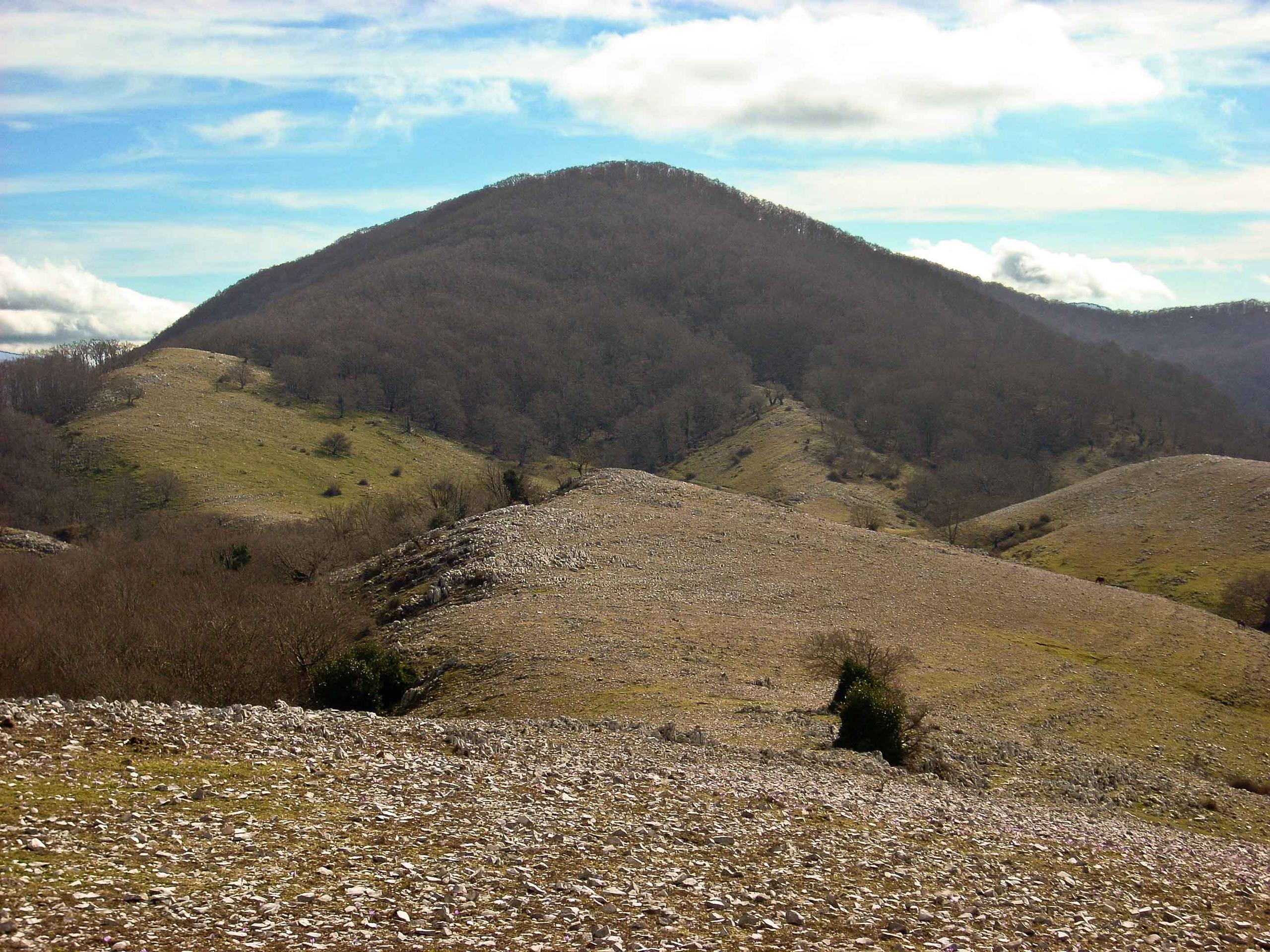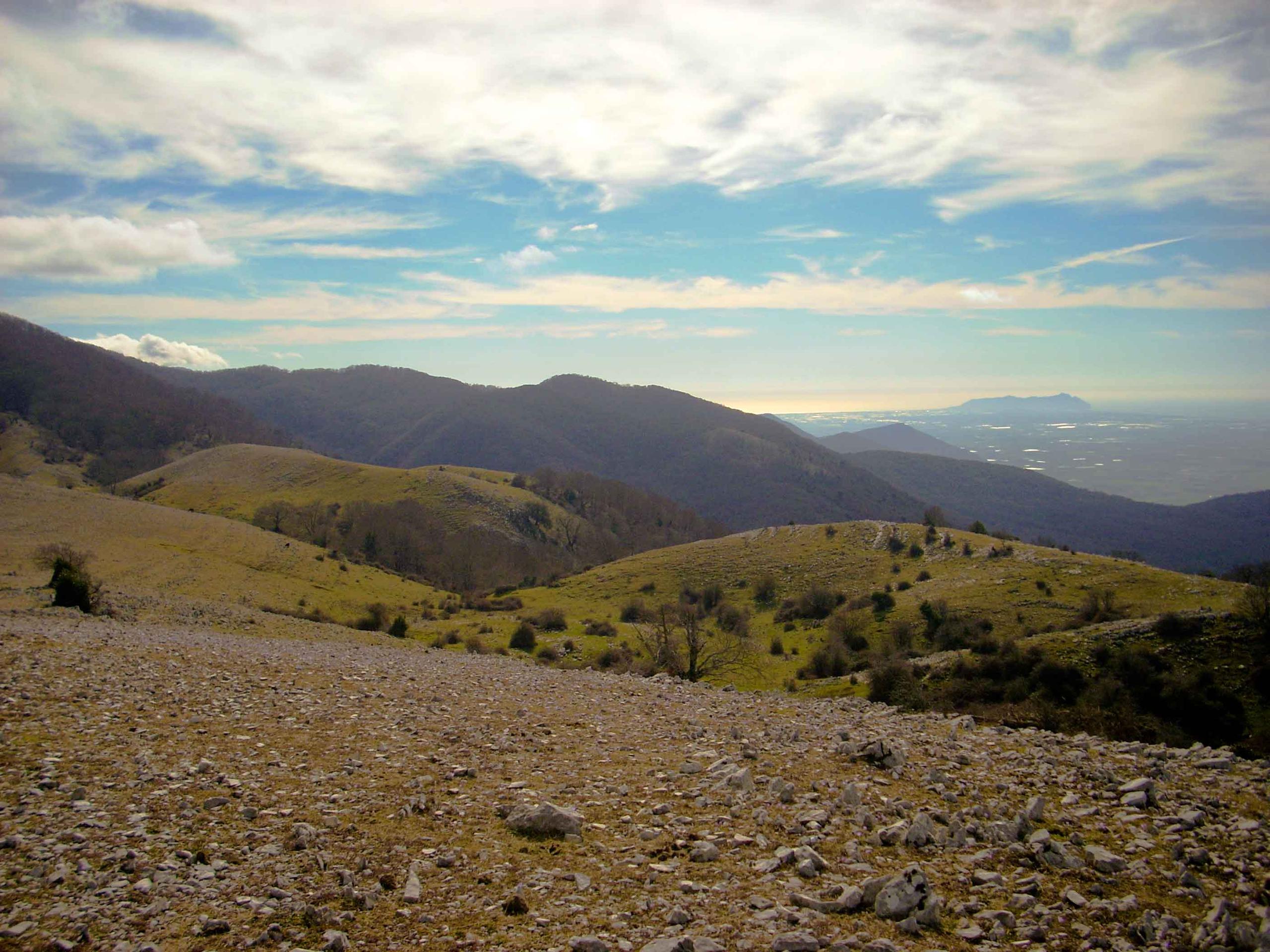Giulianello di Cori
"Those who want to enter the
Roman countryside south of Velletri to meet the Lepini Mountains, will have to
[...] cross for a dozen kilometers a series of tuffaceous hills formed as a
result of the eruptions of the Lazio volcano. Sitting on the most beautiful
hill is Giulianello."
Raffaele Marchetti
As the quotation points out, it is precisely the position of Giulianello that forms a large part of its history, a nerve centre and a crossroads between different geographical and cultural realities, where the Alban Hills meet the Lepini Mountains.
Since the protohistoric age, this area served as a passage from the Sacco Valley to the Pontine Plain and then to the sea. To the Iron Age belong, in fact, various archaeological remains found in the area of Colle della Coedra (near Lake Giulianello), which attest to an early human settlement witnessed by various ceramics, a probable agger (embankment) of fortification and, above all, important hydraulic works (underground tunnel systems for drainage and surface water collection). These remains have a dating between the ninth and sixth centuries B.C. This settlement, at the present research phase, does not seem to be active in the Archaic age. This phenomenon could be explained by the bitter conflicts that face in this area Romans, Volsci and Aurunci. These clashes often led to the looting and sometimes to the definitive disappearance of ancient settlements in southern Lazio, and perhaps Giulianello follows precisely this fate.
In the Roman age the strategic importance of the Giulianello positioning grew more. The main and interregional road network (via Appia, via Latina) is followed by the construction of two secondary and local roads: those connecting Cori (as lepin area) and those in the direction of Artena and Velletri.
Along the latter road, archaeological remains have been found, probably referring to villas and rustic settlements with interesting polygonal works, underground cisterns, necropolis areas and walls in uncertain and square work. Unfortunately, what has not been identified is a reference urban center, which may coincide with the traditional location of a fundus Julianus, owned by the gens Julia. This location, comes only from the testimonies of historians and antiques sailing ships of the XVI-XVII century and has not been confirmed by archaeological findings.
Some materials found recently belong to the early medieval period: they are sculptural fragments that probably belonged to a building of worship. One of them contains an inscription mentioning Pope Leo III (795-816 AD).
Interesting historical details, dating back to 1100, are handed down from the narration of the events (discovery and translation) of the body of San Marco. The scene of these fascinating events are the Castrum Julianum (Giulianello), the Castrum S. Silvestri (located in the area connecting Giulianello and Artena) and the Castrum Turriculae (nowadays Torrecchia Vecchia).
These are the years when the phenomenon of fortification occurs. The local lordships, linked to the cardinal nobility, constituted urban centers where all the inhabitants resident in a circumscribed territory were gathered, ensuring them a discreet administrative organization. The obvious economic interests linked to the possession of these castra also bring Giulianello to the center of interesting stories of rich families and famous people.
Pope Innocent III (1198-1216) is undoubtedly one of the most important and influential figures in the history of Giulianello: this pontiff, a member of the family of the Counts of Segni, will greatly facilitate the family of belonging during his pontificate. It was as a result of this particular and flourishing historical moment that the Conti family also managed to obtain Giulianello (about 1271).
Giulianello remained a possession of the Conti family until 1514. In this year the castle appears to be the wedding dowry of Costanza Conti di Giovanni Battista di Valmontone who, in 1514, marries Lorenzo Salviati, belonging to the second famous family that will guard it until 1775. The Salviati were succeeded by the Borghese, who in reality kept the possession for a very short time, since the legitimate heir Camillo Borghese, husband of Paolina Bonaparte and convinced of Napoleonic philosophy, even during the restoration, refused the lordship, freeing the Julian people from vassalage.
Throughout the Risorgimentale period Giulianello was annexed alternately to Cori and Frosinone; after the Unification of Italy, by royal decree of 3 December 1870, it was officially annexed to Cori.
The modern Giulianello is the result of the restorations made to the village mainly by the Salviati, since 1514, with the interest of Costanza Conti. Under the guidance of this woman the walls were restored and the first reconstruction of the church of S. Giovanni Battista was completed. But it will be the son of the latter, Antonio Maria Salviati, to give Giulianello the face we know. He erected the entrance door (still in use and with an inscription recalling his patron), and oversaw the restoration of the Palazzo Signorile, the mill, the barn and other buildings for public use.
Jacopo Salviati, or rather his mother Maddalena Strozzi, was responsible for the construction of the church of the Madonna della Consolazione (called La Madonnella), still visible and positioned on the Artena road. He made changes to the town and took care, in particular, of the total reconstruction of the church of S. Giovanni Battista; he also completed an enlargement of the city walls to the south-west, followed by a partial urban reorganization. Among the last building interventions of this period is important to mention the construction (1690), at the behest of Francesco Maria Salviati, son of Jacopo, the convent outside the castle walls, entrusted to the care of the Friars Minor observant of St. Francis, in the locality of Colle Santa.
During the process of Unification of Italy Giulianello was annexed alternately to Cori and Frosinone; after the Unification of Italy, by royal decree of 3 December 1870, it was officially annexed to Cori.
The modern Giulianello is the result of the restorations made to the village mainly by the Salviati, since 1514, with the interest of Costanza Conti. Under the guidance of this woman the walls were restored and the first reconstruction of the church of S. Giovanni Battista was completed. But it will be the son of the latter, Antonio Maria Salviati, to give Giulianello the face we know. He erected the entrance door (still in use and with an inscription recalling his patron), and oversaw the restoration of the Palazzo Signorile, the mill, the barn and other buildings for public use.
Jacopo Salviati, or rather his mother Maddalena Strozzi, was responsible for the construction of the church of the Madonna della Consolazione (called La Madonnella), still visible and positioned on the Artena road. He made changes to the town and took care, in particular, of the total reconstruction of the church of S. Giovanni Battista; he also completed an enlargement of the city walls to the south-west, followed by a partial urban reorganization. Among the last building interventions of this period is important to mention the construction (1690), at the behest of Francesco Maria Salviati, son of Jacopo, the convent outside the castle walls, entrusted to the care of the Friars Minor observant of St. Francis, in the locality of Colle Santa.
Bibliografia: D. Palombi (a cura di), Julianum – Giuliano – Giulianello: materiali per la storia di un centro minore del Lazio meridionale, Pontinia 2004

